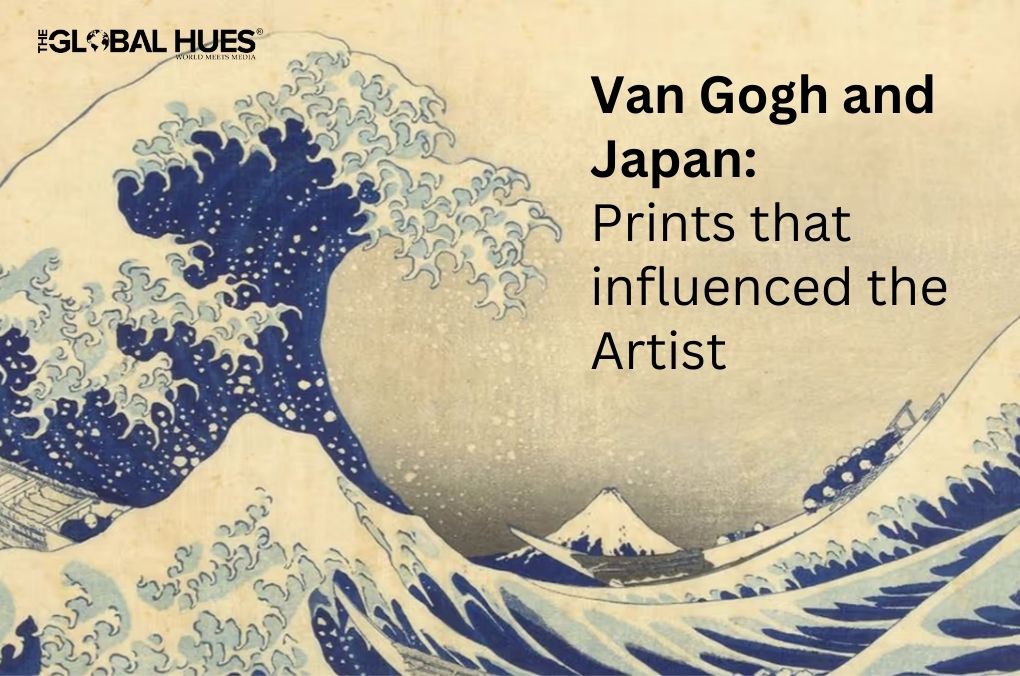Vincent van Gogh and artists from that time, such as Seurat, Cezanne, and Gauguin, began their art careers all as Impressionists. But as their art developed, they took individual career paths. However, they kept on influencing each other.
But when you study Vincent van Gogh’s artwork, you find that apart from the influences of his contemporaries, he was also greatly influenced by Japanese woodblock printing art. In this article, we’ll look at Japanese art’s influences on some of the works on the Van Gogh paintings list.
More about Vincent van Gogh’s (1853-1890) Background
Before we look at the Japanese influence on Vincent van Gogh’s drawings and paintings, let’s briefly find out who Vincent van Gogh was. During his short professional artistic career of only ten years, he created about 2,100 artworks. He began drawing at an early age. As a young man, he worked for an art dealer and was fortunate to travel a lot. When he was transferred to London for a more “permanent” position, he became depressed and decided to leave the art dealership business. He turned to religion and worked as a Protestant missionary in southern Belgium.
His younger brother was prepared to support him financially to enable him to take up painting as a career. So in 1881, he took up painting on a full-time basis. But Van Gogh suffered from psychotic episodes and often neglected his physical health. He didn’t eat properly and drank heavily from time to time. Most art lovers know that during one of his psychotic episodes, he severed a part of his left ear.
He often spent time in psychiatric hospitals but discharged himself sometimes. After one such discharge, it is believed that he shot himself in the chest and died two days later. Sadly, Van Gogh was never acknowledged as an artist during his lifetime, and the genius of this artist has only been “discovered” after his death.
Van Gogh introduced to Japonism
In the 1800s, the Japanese authorities opened Japan to international trade. Before that, Japan had been a very isolated country and “unknown” to people in the West. After the opening of the Japanese markets, the trade missions between Japan and the rest of the world started to flourish. As a result, many other influences also started to flow from Japan to the West. This inflow of other Japanese influences is known as “Japonism.”
The art dealer Siegfried Bing played an important role in introducing Japanese art to the West. He brought a collection of Japanese woodblock prints to France. When Van Gogh visited Bing in 1886, he was very impressed by the woodblock prints. He loved the bold designs, intense colors, and flat areas of the woodblock prints. In addition, the simple but still elegant lines used by the Japanese artists fascinated him. He bought 660 of the wood blocks with the idea of selling the blocks, but nobody was interested in buying them.
He then pinned them to his walls, and over time, he experienced something he could never understand. He found aspects of the Japanese techniques which can be seen in the famous Van Gogh paintings list.
After the woodblock prints had been on his walls for about a year, he began to copy some of the work and used some of the prints as background in his portraits. So Japanese art definitely influenced Van Gogh’s way of representing the world in his paintings.
Some of the most famous Vincent van Gogh Artworks were Influenced by Japonism
The Japanese influence can be seen in the techniques used in Van Gogh’s works, such as “The Sower” 1888 and “Almond Blossom” 1890. As a result of the Japanese influence, Van Gogh also showed a new awareness of the changing of the seasons.
The influence of the woodblock prints is evident in the diagonals and dynamism in “The Sower.” His “Almond Blossom” is cropped with a Japanese artistic perspective. Japonism also had a thematic influence on Van Gogh. After his introduction to Japanese prints, there was a greater awareness of time, the changing of seasons, plants opening up into bloom, and figures beneath flower showers in his works. He also discovered that motifs like the sun and the moon can hold the swirling rhythms of paintings together.
Art historians agree that Van Gogh borrowed the flattened perspective and planes of color and pattern from Japanese artists in his works such as “La Berceuse: Madame Roulin Rocking the Cradle” 1889 and “Portrait of Doctor Félix Rey” 1889.
More about Van Gogh and the Japanese Influence
Vincent van Gogh was such a great admirer of the Japanese woodblock prints that he painted his personal homage to Utagawa Hiroshige by creating his interpretation of “Flowering Plum Trees at Kameido.”
Japanese art also influenced Van Gogh to paint dark outlines around objects and then fill them in with areas of thick colour. At one stage, Van Gogh wrote that studying Japanese art would make him and other people happier and more cheerful and cause everyone to return to nature.
Interestingly, he remained fixated on Japanese art even after his mental breakdown and self-mutilation. The woodblock prints he used as the backdrop of his “Self-Portrait with Bandaged Ear” 1889 are a good example.
Although Japonism greatly influenced Van Gogh’s later works, it must be remembered that Japan was a distant country, and Van Gogh never visited Japan. The “dream” he had about Japan didn’t exist. It was only fictionalized ideas of real places. Van Gogh’s perspective of Japan was only a wishful projection of assumptions.
Conclusion
The Japanese prints had a very great impact on Vincent van Gogh. At one stage, he said that he admired the Japanese artists for the extreme clarity in their work; he said that Japanese art was never dull and never appeared to be done hastily. According to him, he tried to copy their style, especially the drawing of a figure with a few confident strokes.




